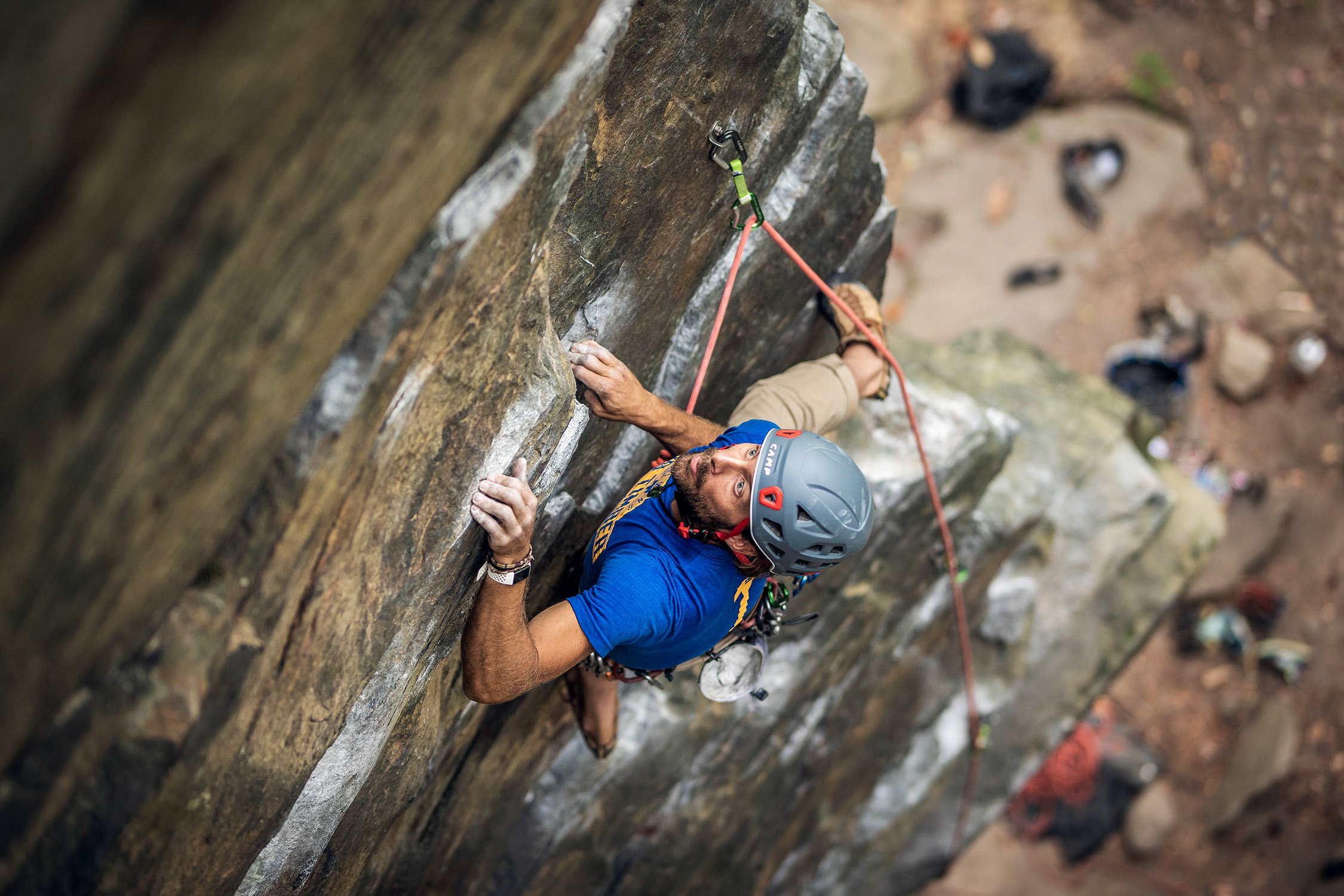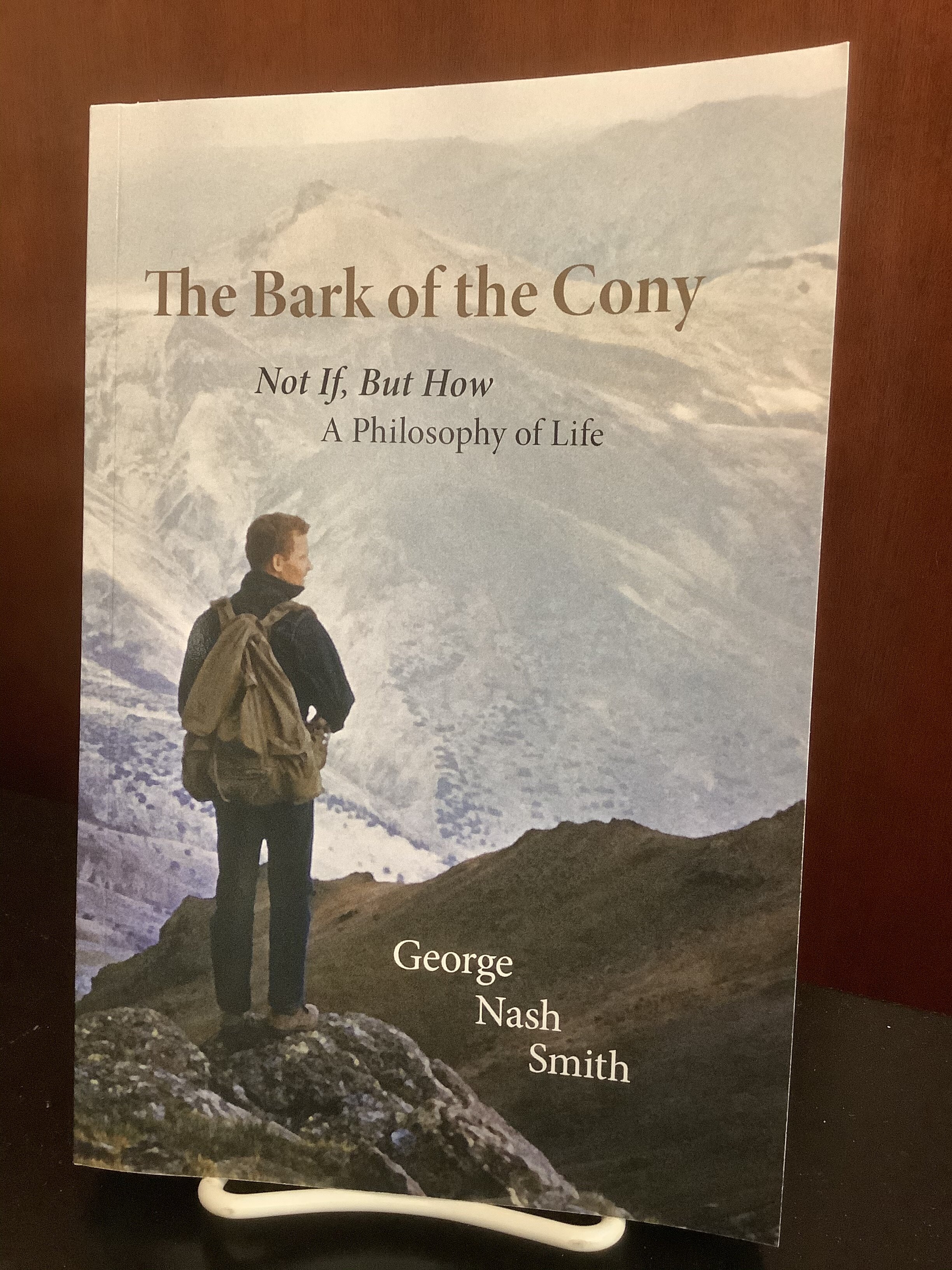Photo by AAC Member Bryan Miller
By Paul Nelson
Legend has it that the idea for an AAC campground at the New River Gorge originated at the New River Climbers’ Rendezvous around 2006. Former AAC president Jim Donini and members of the New River Alliance of Climbers (NRAC) began seriously discussing the idea of a climbers’ campground on or near National Park Service land within the New River Gorge National Scenic River. With the close cooperation of chief ranger Gary Hartley and park superintendent Don Striker, the AAC and NRAC began scouting out potential properties that were wooded, accessible, and near the beautiful sandstone climbing of the NRG that we all love.
By 2010, a property had been located—40 acres on the rim of the gorge near the community of Ames Heights—full of boulders, small cliff lines, old growth forest, and several streams. Due largely to the efforts of former AAC board member Cody Smith and support from the Access Fund, the Club purchased this beautiful parcel of land.
This purchase could not have come at a more critical and opportune time for New River climbing. In 2011, the much-loved Roger’s Rocky Top Retreat—the major climbers’ campground in the area—closed down. There were plenty of campgrounds in the area, but none that could served as a sort of cultural hub for climbers to convene.
In 2011, work on sustainably developing the property began in earnest. Former AAC board member Jamie Logan designed buildings and landscaping, geographer Levi Rose mapped out the property, and NRAC president Gene Kistler began coordinating workers. The next year, 2012, Ben Harris and a team of horse-powered loggers cleared a major loop road through the campground, sawing and stacking all trees that they cut for future use.
In 2013, Jean Kistler, Zac Roper, and Micah Klinger continued to put in thousands of hours of work, carving out the campground’s forty individual campsites among the moss-covered boulders. They installed nearly eighty 10’x10’ elevated wooden tent platforms—a great benefit during West Virginia’s torrential summer downpours.
Stonemason B.J. Johnson built two large fire rings, and NRG climbing legend/arborist Eddie Begoon did extensive work on the property’s old growth forest. At this time, Paul Nelson also signed on as the campground’s manager/host. Under the supervision of Gene Kistler, a storage shed and massive septic system and leach field on-sight was built. Electricity and water were brought in, and installed, and a small one-room manager’s cabin was added. Most significant, in October of 2015 the shower house was finished. A beautiful structure with a large covered porch, dishwashing sink and radiant floor heating—all made from the wood that was grown and harvested right on our own property. During the final “push” of the improvement project, countless volunteers, workers, and campground residents chipped in to help.
Today, you can set up camp in a wooded site, wander over to a roaring fire to exchange beta with fellow climbers, take a walk to our on-site bouldering at the Tuggin’ Shack, Souvenir Roof, or run over to Junkyard crag. End the day with a hot shower or cocktails on our massive front porch. None of this would be possible without the help of the AAC, NRAC, AF, and most importantly thousands of volunteer hours by hundreds of climbers. This campground is truly the cultural hub of the New River climbing community—enjoy!































































